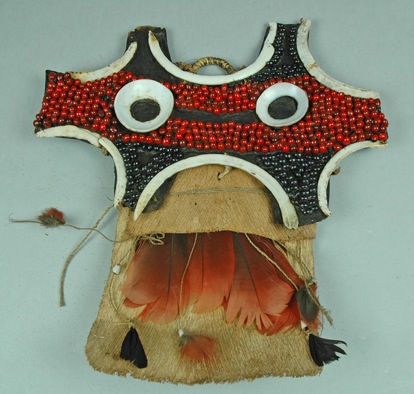Adulthood
Status is a wide-ranging concept. It may refer to seniority and leadership in a social or political sense, such as those with authority or money, or members of a certain clan or caste. Status can pertain to both men and women who may have married or had children. For men, it might relate to prowess achieved as a hunter, warrior, or even lover. It may also refer to certain skills or knowledge associated with a particular profession such as a healer or a craftsperson. As seen in our own society, for women, jewellery and ornamentation can advertise twin elements of attraction and power – sex and wealth. Constrastingly, in socialist or egalitarian societies, where labour, wealth and power have already been distributed such extravagant use of the body for social gain is less important.Status is a wide-ranging concept. It may refer to seniority and leadership in a social or political sense, such as those with authority or money, or members of a certain clan or caste. Status can pertain to both men and women who may have married or had children.
The materials from which ornaments are made can be important. Often this relates to monetary worth but can also be in terms of symbolic worth. Gold, for example, is found the world over in items of jewellery, from earrings to necklaces, from cufflinks to head ornaments. It is valued for its rarity and price by weight, but for the Aztecs and Egyptians it was also divine, associated with the brilliance and energy of the sun. In Ghana (previously known as the Gold Coast colony under British rule), gold was imporant as a commodity on which trade and economic power rested. Yet for the local Asante people it was also valued as coming from the earth and therefore having a mystical significance: gold pectoral discs called akrafokonmu, were worn by court officials responsible or the ritual purification of the soul of the Asantehene (leader). This association with natural phenomena is also evident in the Asante belief that a pot of golf is to be found at the foot of a rainbow, a tradition shared by Europeans and thought to have originated in old Ireland or Silesia (Poland). Gold is only one example of a material laden with real and symbolic value. Ohers include glass beads, brass, cowrie shells, ivory, feathers, totroiseshell, gemstones, whale teeth, fur and mother-of-pearl to name but a few.
 Warrior's ornament from Papua New GuineaSocially undesirable or low status may also be marked be marked on the adult body. This is usually imposed by an authority outside the indivdual in order to punish, to provide a visual warning to others or to bring shame and humiliation upon that person. In ancient China, an adulterous husband was castrated; in ancient Rome prostitutes had to wear a certain type of toga; according to Islamic law, theft is punishable by amputation of the hands; and in colonial Massachusetts, 'cropping one of the ears was occasionally included in judicial sentences in cases of burglary.' Shaven hair was also used in such a punitive way, particularly in cultures where long hair was the norm for women. Sometimes the individual might be forced to wear a uniform, tag or a coloured marker: paupers receiving poor relief in 18th-century England were required to wear a blue cloth on their right sleve and in Nazi-occupied Europe, Jews and homosexuals were required to wear similar yellow and pink 'badges of shame'. Sometimes the marking can be of a more permanent nature; tattooing was used as a punishment in Japan, China and the Ancient world. Branding and flagellation (though illegal in the UK and other countries) have also been used historically to identify criminal or slave status in some societies.
Warrior's ornament from Papua New GuineaSocially undesirable or low status may also be marked be marked on the adult body. This is usually imposed by an authority outside the indivdual in order to punish, to provide a visual warning to others or to bring shame and humiliation upon that person. In ancient China, an adulterous husband was castrated; in ancient Rome prostitutes had to wear a certain type of toga; according to Islamic law, theft is punishable by amputation of the hands; and in colonial Massachusetts, 'cropping one of the ears was occasionally included in judicial sentences in cases of burglary.' Shaven hair was also used in such a punitive way, particularly in cultures where long hair was the norm for women. Sometimes the individual might be forced to wear a uniform, tag or a coloured marker: paupers receiving poor relief in 18th-century England were required to wear a blue cloth on their right sleve and in Nazi-occupied Europe, Jews and homosexuals were required to wear similar yellow and pink 'badges of shame'. Sometimes the marking can be of a more permanent nature; tattooing was used as a punishment in Japan, China and the Ancient world. Branding and flagellation (though illegal in the UK and other countries) have also been used historically to identify criminal or slave status in some societies.
